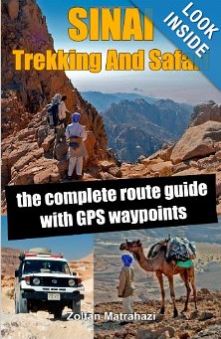
Luxor Attractions
Luxor was once the thriving capital of ancient Egypt, for five hundred years during the New Kingdom era (1550 - 1069). Many of the mighty monuments built during this period still stand, and as a result, Luxor has by far the largest collection of pharaoh's temples and tombs anywhere in the world.
Although the largest and most famous Egyptian monuments (the Giza Pyramids) lie to the north of the country near Cairo, no one with more than a passing interest in history could visit the country without also visiting Luxor.
The city’s monuments are located in two areas.
The East Bank of the Nile
Luxor traverses the river Nile, with most of the modern city and its amenities located on the East Bank. This is where you’ll find the majority of hotels and hostels, the market, the train station and the bus station.
Luxor Temple - The New Kingdom temple founded by Amenophis III takes centre stage in the city, just a stone’s thrown from the waterfront and the bazaar. Illuminated by green spot lights at night. Read more about The Luxor Temple
Karnak Temple - Arguably Egypt’s greatest monument bar the Pyramids, the giant temple complex is located 3km north of the Luxor Temple. The two were once connected by an avenue of some 2000 sphinxes. Read more about Karnak Temple or Karnak Sound and Light Show
The Bazaar - Dissecting the town from the South Eastern side of the Luxor temple and running North, is Sharia Al-Souk, AKA the Grand Bazaar. All your favourite Egyptian souvenirs with the customary tongue-in-cheek bravado of the Egyptian shopkeeper. Follow the street North into Sharia Ahmes and you’ll find a section with a more authentic feel. Read a guide to haggling in Egypt
Luxor Museum - Located north of the Luxor Temple on the corner of the main corniche and Sharia Al Mathari, the museum houses statues, funeral relics and other findings from the city’s major sites. Well laid out with English labels and descriptions.
The Mummification Museum - Dedicated to death and funeral practices and beliefs in Ancient Egypt. The museum is located by the ferry terminal to the West Bank. Also the venue for many fascinating lectures by Egyptology expert during the winter months.
The West Bank
The West bank of the Nile conceals a number of sights known collectively as the Theban Necropolis. Aware of the looting that took place in the funerary homes of the Old Kingdom pharaohs (i.e. the Giza Pyramids) subsequent leaders took to hiding their tombs in the valleys around Thebes.
Valley of Kings - A collection of some 65 hidden tombs and counting, the most famous of which, Tutankhamen was the first to be discovered fully intact in all its glory.
Hatshepsut’s Temple - The mortuary temple of Egypt’s most successful indigenous female ruler. ‘Djesser Djesure’ meaning ‘Splendour of splendours’ is the focal point of the complex and is built directly into the cliff face. On a clear day it’s visible from the East bank near Karnak.
Valley of the Queens - Some eighty tombs of queens, high officials and royal children. Unfortunately, little remains of most bar the excavation pit.
Tombs of the Nobles - A collection of tombs located near the village of Old Gurna. Unlike their royal counterpart, Nobles were buried overtly and extravagantly.
Rammuseum - The mighty mortuary temple of Ramses II.




